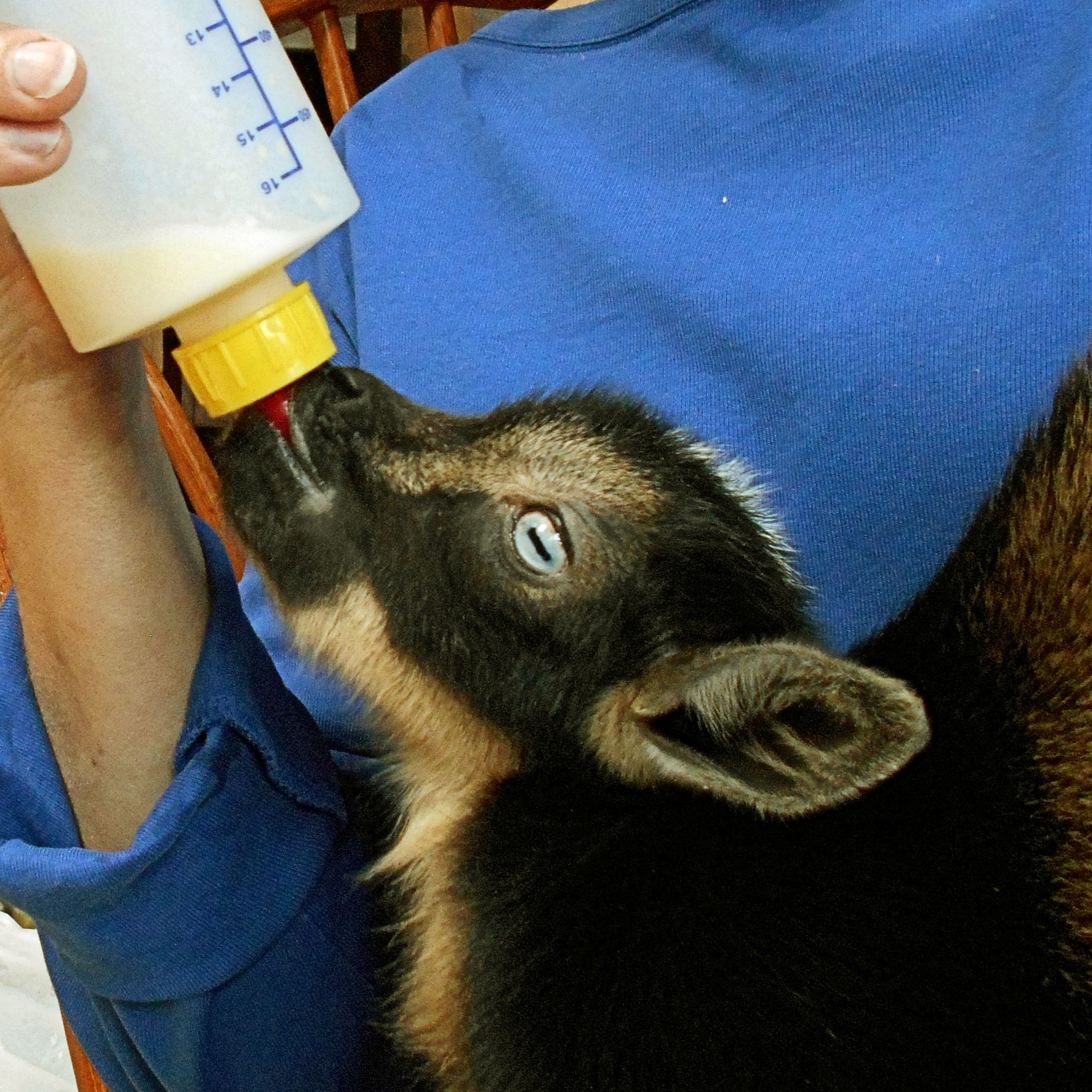Bottle-Feeding & Kid Care
Raising kids is incredibly rewarding. Whether dam-raising or bottle-feeding, the first few weeks are critical for a healthy start.
The Golden Rule: Colostrum is Life
Colostrum, the doe's first milk, is packed with essential antibodies that a kid's immune system cannot produce on its own. It is absolutely vital for their survival.
- Timing is Everything: A kid's gut can only absorb these large antibody molecules for the first 12-24 hours of life. They need to get colostrum as soon as possible after birth, ideally within the first hour.
- How Much: Aim for 10-12% of the kid's body weight in colostrum within the first 24 hours, divided into 3-4 feedings. (e.g., a 5lb kid needs about 8oz total).
- Backup Plan: Always have a backup supply. You can freeze colostrum from a healthy doe for up to a year. Thaw it gently in a warm water bath—never microwave it, as that will destroy the antibodies. If you don't have any, a high-quality powdered colostrum replacer is the next best thing.

Bottle Feeding Technique & Schedule
Consistency is key to preventing digestive upset (scours). Stick to a schedule and be meticulous about hygiene.
| Age | Feeds per Day | Amount per Feed | Tips |
|---|---|---|---|
| Week 1 | 4-5 | 6-10 oz | Warm milk to 102°F. Use Pritchard or similar nipples. Sanitize bottles after every use. |
| Weeks 2-3 | 4 | 12-16 oz | Introduce high-quality hay and fresh water in a separate, clean area. |
| Weeks 4-8 | 3 | 16-20 oz | Kid should be actively nibbling hay and may start on a small amount of "creep feed" (kid starter grain). |
| Weeks 9-12 | 2 | 16 oz | Gradually reduce milk to encourage more intake of solid food, preparing for weaning. |
Other Early Kid Care
- Disbudding: If you plan to prevent horn growth, it must be done by an experienced person between 7-14 days of age. This is a skilled and sensitive procedure.
- Vaccinations: Begin the CDT vaccine series around 4-6 weeks of age, following your veterinarian's schedule.
- Coccidiosis Prevention: Kids are very susceptible to coccidiosis, an internal parasite that causes diarrhea (scours). Keep their environment scrupulously clean and dry. Many people use a medicated feed (coccidiostat) as a preventative measure.
Understanding Milk Goiter
New goat owners are often alarmed to find a squishy lump under the throat of a fast-growing, healthy kid. In most cases, this is a harmless condition known as milk goiter.
- It is NOT a true goiter, which is caused by an iodine deficiency. Do not supplement with iodine unless directed by a vet, as you can cause iodine toxicity.
- It is thought to be an inflammation of the thymus gland, which is part of the immune system. It appears in kids between 2 weeks and 4 months of age who are growing very quickly.
- The lump feels soft and fluid-filled and will eventually disappear on its own as the kid matures. As long as the kid is otherwise healthy, active, and eating well, a milk goiter is not a cause for concern.